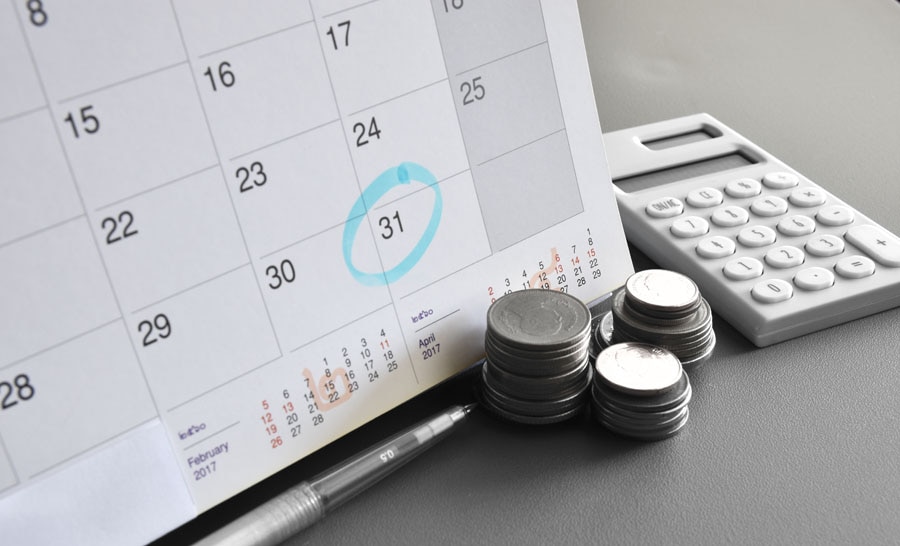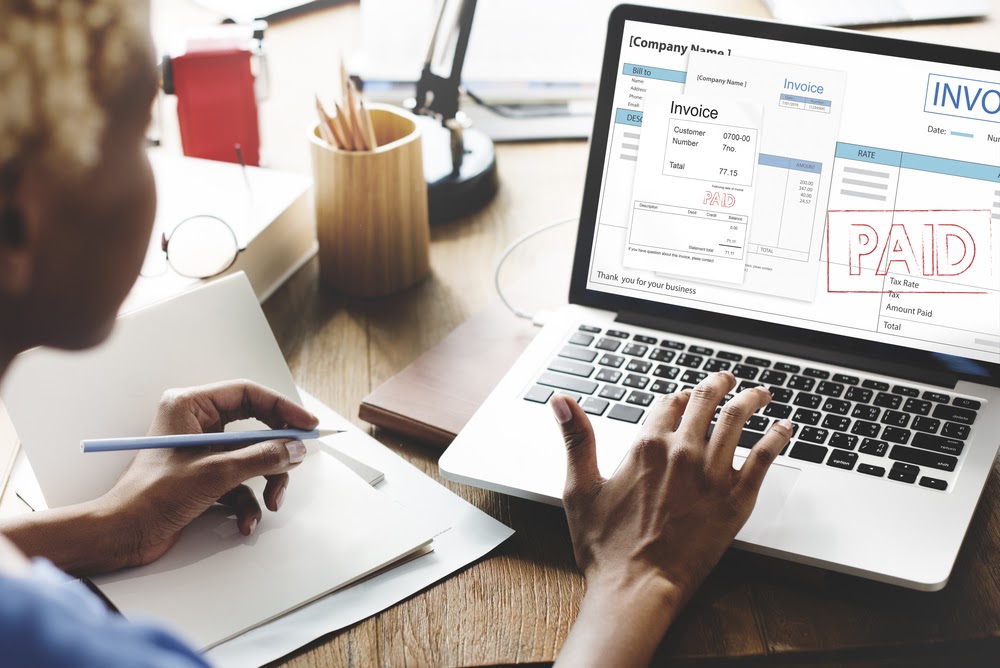Sending invoices to customers is one of the most important jobs for any business, however, despite being critical to the effective running of a business, invoicing is one of the tasks business owners complain about the most. For many businesses, there just aren’t enough hours in the day, and that can lead to payment delays.

How to send an invoice and get paid faster
The invoice should outline the details of the transaction, including the goods or services delivered, the amount owed, and how and when the payment should be made.
The process of writing and sending invoices to customers can be time-consuming for freelancers and business owners, but the good news is that we are here to help. You can use our invoicing software to create professional invoices instantly, and track the invoice from delivery through to payment to help you get paid faster.
When to send an invoice
Choosing when to send an invoice comes down to the type of service you offer, your relationship with the customer and the financial demands on your business.
Invoices are usually issued at some point after the work has been completed, however, some businesses also invoice customers before delivering a service, either for part-payment or payment in full.
So which is best for your business?
Sending an invoice before providing a service
There are times when it makes sense to invoice a customer for payment before the work is done.
Requesting payment in advance may be appropriate in the following scenarios:
- You have to buy materials to complete a job and you need payment upfront to do so.
- You’re working on a long-term project and being paid before each milestone is reached will help to maintain your cash flow.
- If cash flow is tight, you might ask for partial payment before starting a project. This can provide security for the supplier and still leave the client with wiggle room to negotiate changes or discounts if they’re not happy with the work.
- If the client has a history of not paying on time, it makes a lot of sense to ask for payment upfront. This removes the risk of late payments or nonpayment and still allows you to accept the work.
If you do intend to send an invoice before your job is complete, there are a few things to bear in mind:
- Always communicate your intention to ask for payment upfront clearly to the customer and make sure they know how much you’ll expect and why.
- Create a professional estimate that itemises all the products and services they’re ordering and the cost of each.
- Offer a small discount to incentivise and thank customers who agree to pay in full upfront.
- Always explain the steps you’ll take to provide complete customer satisfaction. This can be a concern for customers who agree to pay in advance.
Sending an invoice after providing a service
Sending an invoice to a customer after the work has been done is the most common method of requesting payment.
There are three options available to you if this is the route you choose to take:
- You can invoice as soon as the job is done. This is common for one-off, small-scale jobs such as plumbing and is an effective way to get paid more quickly.
- A lot of service providers send an invoice within 48 hours of the work being done. That gives the client time to make sure they’re 100% happy with the work before you request payment.
- Companies with ongoing commercial contracts with their clients tend to invoice them every month. That can help to reduce the time spent issuing and processing invoices, leads to consistent payments, and ensures more predictable cash flow.
How to write an invoice email
These days, most businesses prefer to send an invoice via email to their customers. Writing a quick email with an attached invoice is thankfully a straightforward process. Need to know how to send an invoice via email? Check out the simple tips we’ve listed below:
1. Include the most important information in the subject line
You should include details such as the invoice number and the payment due date in the subject line to make it immediately obvious what the email is about. That way, your invoice won’t get overlooked.
2. Speed up the process with an email template
If you invoice a lot, creating an email template that you can change the details of will allow you to send invoices quickly and easily.
3. Include the invoice as an attachment
Your invoice should contain all the necessary information the customer will need in the body of the email you send to make the payment. This information should also be attached to the email as a downloadable PDF. That will allow the customer to save it, print it or upload it to their accounting software, but - most importantly - not edit it.
4. Follow up on your invoice
Obtain the phone number of your payment point of contact and make a quick phone call to check that your invoice has been received and is with the right person or department.
Here’s a simple email invoice template that you can use:
Subject: Invoice [invoice number] for [product or service] due [date]
Hi [Recipient’s Name],
I hope you’re well. Please find invoice [invoice number] attached for the recent [product/service]. The payment is due on [date]. Please do get in touch if you have any questions.
Many thanks,
[Sender’s Name]
Overdue invoice payment emails
Unfortunately, it’s not always a case of sending out the invoice and sitting back to wait for the payment to be made. Sometimes invoices are missed or sent to the wrong person by mistake. Some customers also consistently pay invoices late, which is an increasingly common problem for many businesses.
If an invoice hasn’t been paid on time, here are a few email templates you can use:
1. Email reminder on the day a payment is due
Many companies schedule invoice payments on the due date, so there’s a good chance the payment will be made on time - but it never hurts to provide a polite reminder.
Subject: Payment due for invoice [invoice number]
Hi [Recipient’s Name],
This is just a quick message to remind you that invoice [invoice number], which I sent on [date], is due for payment today. All the payment details are specified in the invoice, which I’ve reattached for your reference.
If you have any questions, please let me know.
Many thanks,
[Sender’s Name]
2. Email reminder one week after payment was due
The invoice is now overdue, so it’s worth firming up your tone a little. However, you should still be polite and provide details about the invoice, including the invoice number and the due date, to help the customer find the invoice and make the payment.
Subject: Payment of invoice [invoice number] is one week overdue
Hi [Recipient’s Name],
My records show that the payment for invoice [invoice number], due on [date], has not yet been made. Could you please check this at your end and let me know when the invoice will be paid. If you’ve lost the invoice, please let me know and I’ll happily send you another copy.
Many thanks,
[Sender’s Name]
3. Email reminder one month after payment was due
Now things are getting serious. If a customer has still not made a payment one month after it was due and has not been in contact to explain why, you could have a problem. You should take a tougher stance but still keep it professional, despite the frustration you’re likely to feel.
Subject: Final payment reminder for invoice [invoice number]
Hi [Recipient’s Name],
I’m yet to receive payment for invoice [invoice number], which was due on [date].
Please be aware that as per my terms, I charge additional interest of [rate of interest] on payments that are more than 30 days past their due date. That interest will be added to the outstanding amount from today.
Please arrange for payment of [invoice amount] to be made immediately or contact me now if you have any questions.
Thanks,
[Sender’s Name]
Invoicing Mistakes to Avoid
It can be easy to send an invoice only to realise later that you've made some easy-to-avoid errors. Take a look at our list of top invoice mistakes to avoid hiccups along your payment process:
- Forgetting your payment due date: In every possible instance, try to specify an exact due date for your payment. Failing to set a specific due date for your payment can lead to avoidable confusion and late payments. Plus, setting a specific date also makes it easier to forecast your cash flow.
- Leaving out itemisation: Many clients prefer that their invoices be itemised since it makes it easier for them to track, record, and report on their expenses. Remembering to itemise your invoices is a good way to prevent clients from asking you to break down the services you provided later on.
- Not sending out your invoice on time: It's never a good idea to wait for customers to follow up about an invoice to see if it's been delivered. Promptly send your invoice on time to expedite the rate at which customers pay the funds they owe and never wait until you're at the end of their billing cycle.
- Sending an invoice to the incorrect recipient: It can be embarrassing, but it's not uncommon to send your invoice to the wrong person. Always double-check before you send an invoice that you've got the right point of contact so that you get paid on time and don't have to do everything all over again.
On the road to faster payments
If you follow the invoicing tips in this guide, make use of the email templates we’ve provided and consider using our invoicing software, we’re confident that your invoices will be sent and paid more quickly. You’ll also have a consistent invoicing process in place so your customers and clients will know exactly what to expect when they work with you.
Invest in your small business
We hope you’ve found this article on how to send an invoice and the accompanying email templates useful. QuickBooks is here to help small businesses like yours grow - check out our blog to learn even more about how you can help your business succeed.












